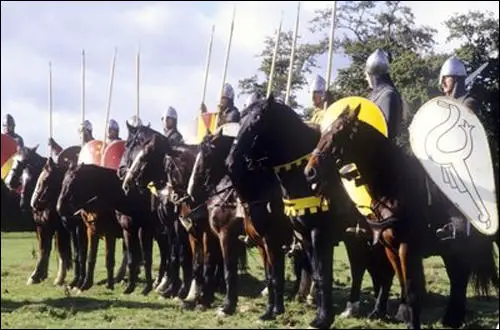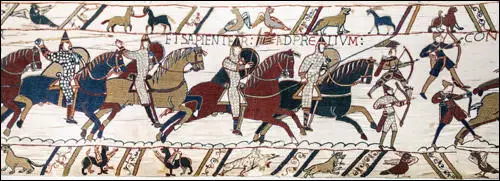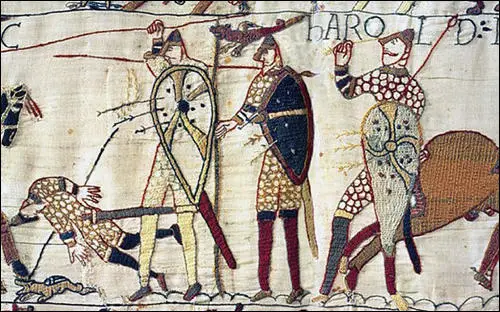Classroom Activity : The Battle of Hastings
In the summer of 1066 William of Normandy made preparations for the attack on England. To make sure he had enough Normans to defeat Harold of Wessex, he asked the men of Poitou, Burgundy, Brittany and Flanders to help. William also arranged for soldiers from Germany, Denmark and Italy to join his army. In exchange for their services, William promised them a share of the land and wealth of England. William also managed to enlist the support of the Pope in his campaign to gain the throne of England.
William also had to arrange the building of the ships to take his large army to England. About 700 ships were ready to sail in August but William had to wait a further month for a change in the direction of the wind.
Primary Sources

(Source 2) Message sent by William just before the battle took place. The message is quoted by William of Poitiers in his book Deeds of William, Duke of the Normans. (c. 1071)
With the aid of God I would not hesitate to oppose (the English) ... even if I had only ten thousand... instead of sixty thousand I now command.
(Source 3) Anglo-Saxon Chronicle, Version D (1066)
Then came William duke of Normandy into Pevensey... This was then made known to King Harold, and he then gathered a great force, and came to meet him at the estuary of Appledore; and William came against him unawares before his people were assembled... King Harold was killed... and the French were masters of the field... God granted it to them because of the sins of the people.
(Source 4) Anglo-Saxon Chronicle, Version E (1066)
William landed at Hastings on Michaelmas Day, and Harold came from the north and fought with him before all the army had come, and there he fell and his two brothers Gyrth and Leofwine; and William conquered the country.

(Source 6) William of Malmesbury, Deeds of the Kings of the English (c. 1140)
The English... passed the night without sleep, in drinking and singing, and, in the morning, proceeded without delay towards the enemy; all were on foot, armed with battle-axes... The king himself on foot, stood, with his brothers, near the standard, in order that, while all shared equal danger, none might think of retreating... On the other side, the Normans passed the whole night in confessing their sins... (The English) few in number and brave in the extreme... fought with ardour, neither giving ground, for great part of the day... Harold fell, his brain pierced by an arrow... One of the soldiers with a sword gashed his thigh as he lay on the ground.

(Source 8) William of Poitiers, Deeds of William, Duke of the Normans (c. 1071)
Harold and his two brothers had fallen close together. The king could not be recognised by his face - only by certain marks on his body. His mother offered an equal weight in gold for her son's corpse. But the duke refused, and had the body taken to his own camp.
Questions for Students
Question 1: Study source 3. Select examples from the passage where the author expresses (i) facts, and (ii) opinions.
Question 2: There is some doubt about how Harold was killed. Describe how sources 3, 4, 6, 7 and 8 help to answer this question. How reliable is this evidence? Before you answer this question it will help you read about the authors of these sources and the Bayeux Tapestry.
Question 3: Compare the value of sources 1, 3 and 8 to the historian writing a book about the Battle of Hastings.
Question 4: Study sources 2, 3, 4 and 6. Make a list of the reasons why these writers believed that the English lost the Battle of Hastings. Then explain whether you think these reasons are (a) very important, (b) fairly important, or (c) not very important in explaining Harold's defeat.
Answer Commentary
A commentary on these questions can be found here
Download Activity
You can download this activity in a word document here
You can download the answers in a word document here
